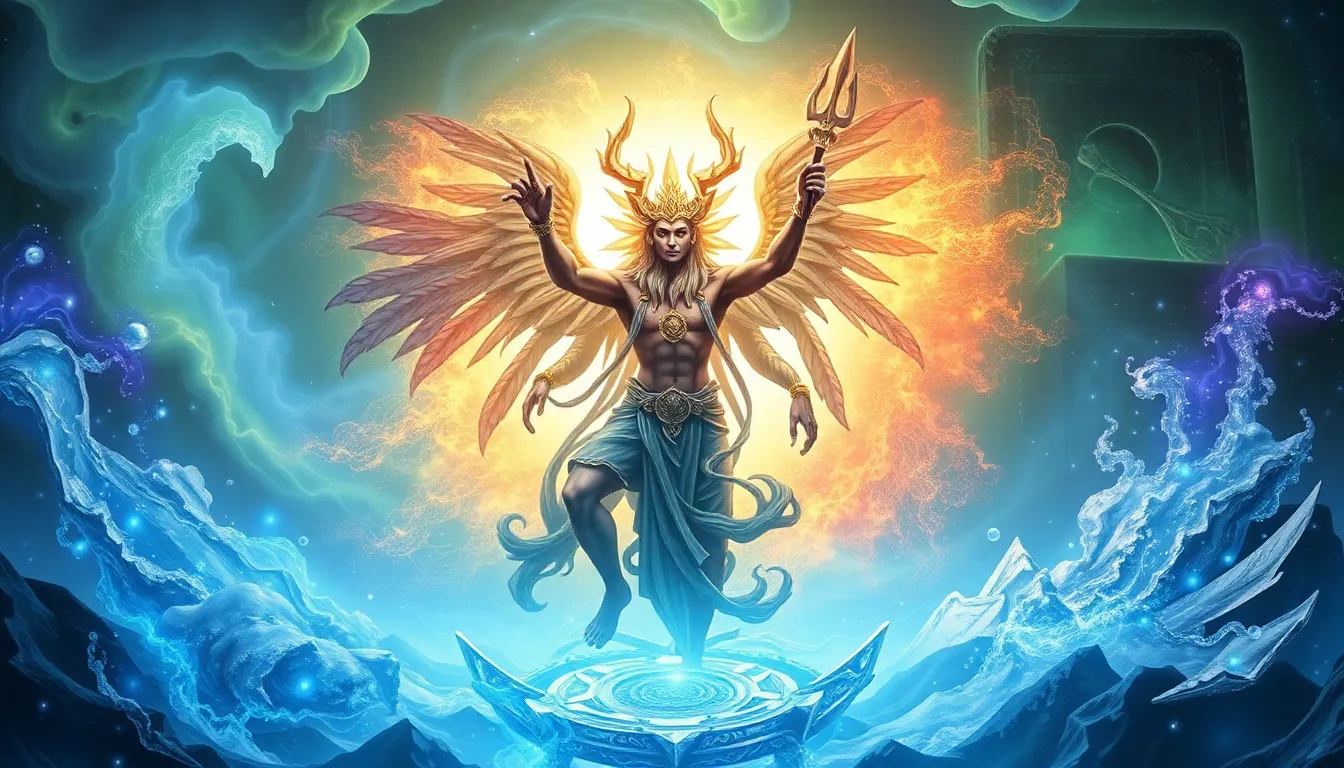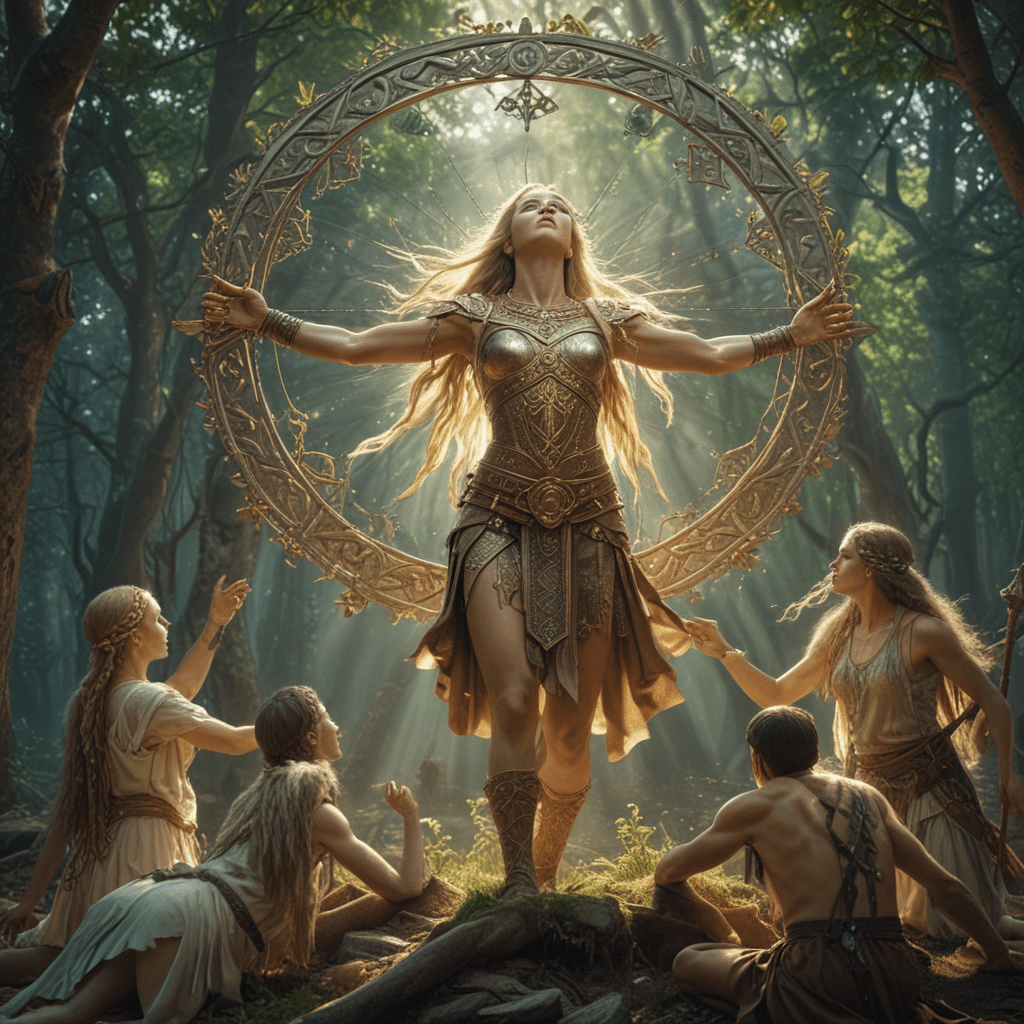Ancient Deities and Their Connection to the Elements: Myths Unveiled
1. Introduction to Ancient Deities and Elemental Connections
Throughout history, ancient deities have played a vital role in shaping the beliefs and practices of various cultures. These divine figures were often personifications of natural forces, embodying the elements of earth, water, fire, and air. By understanding these elemental associations, we can gain insight into the worldviews of ancient civilizations and their reverence for nature.
The four classical elements—earth, water, fire, and air—were not merely physical substances; they symbolized fundamental aspects of existence and were often intertwined with creation myths, agricultural practices, and spiritual rituals. Recognizing these connections allows us to appreciate the rich tapestry of mythology and the human experience reflected in these ancient stories.
2. The Element of Earth: Deities of Stability and Fertility
Earth deities are often associated with stability, fertility, and the bounty of nature. In Greek mythology, Gaia, the personification of Earth, is regarded as the mother of all life. Similarly, in Egyptian mythology, Geb represents the earth and is closely linked to fertility and vegetation.
- Gaia: The primordial goddess who emerged at the dawn of creation, Gaia gave birth to the sky, mountains, and sea.
- Geb: Often depicted lying beneath the sky goddess Nut, Geb is associated with agriculture and the sustenance of life.
Myths surrounding these deities illustrate their crucial role in creation and sustenance. For instance, in many cultures, earth deities are celebrated during planting and harvest festivals, symbolizing the cycle of life and the importance of agriculture. The symbolism of earth is deeply rooted in ancient rituals, where offerings were made to ensure a fruitful harvest and a prosperous community.
3. The Element of Water: Gods of the Sea and Rivers
Water deities often embody the dual nature of water as a source of life and a force of destruction. In Greek mythology, Poseidon, the god of the sea, wields the power to create storms and earthquakes, reflecting water’s unpredictable nature. Similarly, Tiamat in Babylonian mythology represents the primordial sea and is associated with chaos and creation.
- Poseidon: Known for his trident, Poseidon governs the oceans and is also considered the protector of sailors.
- Tiamat: A goddess who symbolizes the saltwater ocean, Tiamat’s myth speaks of creation and the battle against chaos.
- Yemaya: An Afro-Caribbean goddess of the sea, Yemaya is revered as a mother figure and protector of women and children.
Myths associated with water often explore themes of creation, destruction, and rebirth. The flood myths found in various cultures, such as the Epic of Gilgamesh and the story of Noah’s Ark, illustrate water’s ability to cleanse and renew the world. In ancient societies, water was sacred and held cultural significance, often seen as a source of life that nourished crops and supported communities.
4. The Element of Fire: Guardians of Transformation and Destruction
Fire deities are often seen as guardians of transformation, representing both creation and destruction. In Greek mythology, Hephaestus is the god of fire and craftsmanship, known for his skills in forging weapons and tools. Pele, the Hawaiian goddess of volcanoes, embodies the destructive and creative aspects of fire.
- Hephaestus: The blacksmith of the gods, Hephaestus is associated with fire, metalworking, and technology.
- Pele: Revered for her power to create land through volcanic activity, Pele is also feared for her destructive capabilities.
- Agni: In Hindu mythology, Agni is the god of fire and is central to rituals, symbolizing purity and transformation.
Myths surrounding fire convey its dual nature, highlighting its ability to destroy but also to purify and transform. Fire played a crucial role in rituals and ceremonies, serving as a medium for offerings and a symbol of divine presence. In everyday life, fire was essential for cooking, warmth, and protection, making it a fundamental element in human existence.
5. The Element of Air: Spirits of the Sky and Breath of Life
Air deities are often associated with the sky, winds, and the breath of life. In Greek mythology, Aeolus is the god of the winds, while in Egyptian mythology, Thoth is the god of wisdom and writing, often depicted with the head of an ibis, a bird of the air.
- Aeolus: The keeper of the winds, Aeolus has the power to calm or unleash storms.
- Thoth: A deity linked to knowledge and communication, Thoth represents the intellectual aspect of air.
- Fujin: In Japanese mythology, Fujin is the god of wind, often depicted with a bag of winds that he releases to create storms.
Myths involving air often explore themes of communication and the unseen forces that shape our world. Philosophically, air represents thought, intellect, and the ephemeral nature of existence. In ancient cultures, the air was viewed as a vital force that connected all living beings, embodying the essence of life itself.
6. Interconnectedness of the Elements in Mythology
In mythology, the elements often interact in complex ways, reflecting the interconnected nature of the universe. Many deities embody multiple elements, showcasing the balance and harmony between them. For example, the Hindu god Shiva is known as the Lord of the Elements, representing both the destructive and creative forces of nature.
- Shiva: A multifaceted deity who embodies the powers of creation, preservation, and destruction, demonstrating the balance of nature.
The interplay between elements is depicted in various myths, where the balance of earth, water, fire, and air is essential for harmony in the cosmos. Understanding these relationships helps us appreciate the holistic worldview of ancient cultures, where every element has its place and significance.
7. Cultural Variations: Elemental Deities Across Civilizations
Elemental deities vary widely across different civilizations, influenced by geography, climate, and cultural practices. For instance, the Greek pantheon features gods like Poseidon for water and Hephaestus for fire, while the Egyptian gods Geb and Nut represent earth and sky, respectively.
- Greek Mythology: Focused on human-like gods with personal traits, reflecting societal values.
- Egyptian Mythology: Emphasizes the afterlife and cosmic order, with deities associated with nature and agriculture.
- Hindu Mythology: Features a complex system of gods embodying various aspects of the universe, including elements.
Geography greatly influenced the perception of elements and their associated deities. Coastal cultures revered water gods, while agrarian societies honored earth deities to ensure fertile lands. Additionally, trade and migration facilitated the exchange of mythological narratives, leading to the evolution of elemental deities across cultures.
8. Modern Interpretations: Elemental Deities in Contemporary Culture
The influence of ancient deities is evident in modern literature, film, and art. Contemporary works often draw inspiration from these elemental connections, reinterpreting myths for a new audience. For example, the character of Poseidon appears in popular films and books, showcasing his timeless appeal.
- Literature: Many fantasy novels incorporate elemental magic, echoing the ancient associations of deities with nature.
- Film: Movies like “Percy Jackson” and “Avatar” explore themes of elemental powers and their significance.
- Art: Modern artists often depict elemental deities, emphasizing their relevance in today’s world.
Furthermore, there has been a resurgence of interest in elemental spirituality and paganism, with many individuals seeking to reconnect with ancient practices and beliefs. This modern adaptation reflects a growing awareness of the interconnectedness of nature and the divine.
9. The Role of Nature and Environment in Shaping Mythological Narratives
The natural environment has profoundly influenced the development of mythological narratives surrounding elemental deities. As societies interacted with their surroundings, they crafted stories that both reflected and explained the forces of nature




